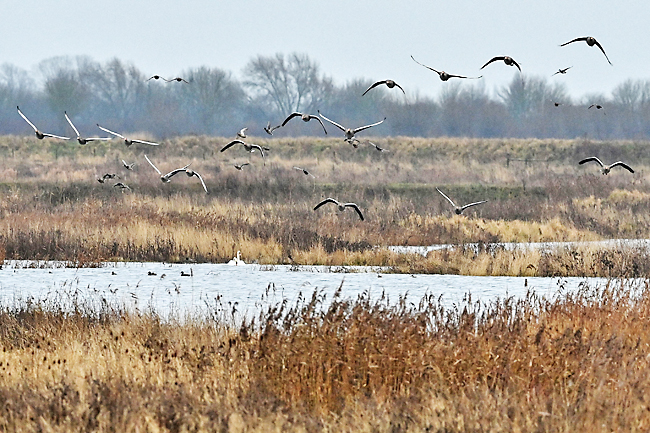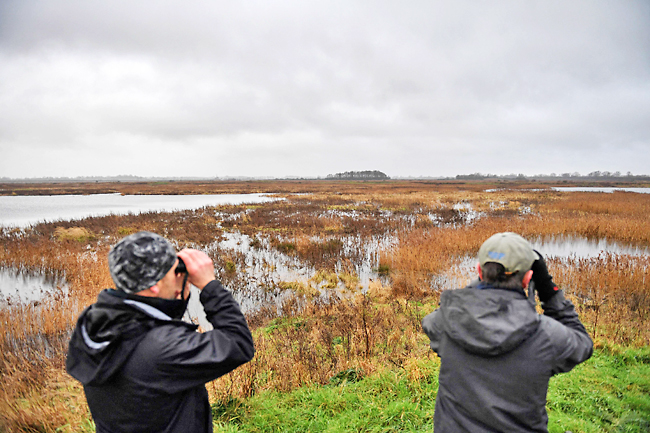EARITH, UNITED KINGDOM (AFP) – Nature is reclaiming her territory at a quarry in the east of England that is being transformed into a vast reserve offering vital sanctuary to endangered birds.
With its reedbed wetlands, the marshy plain of the Fens outside Cambridge has become an attractive habitat for the secretive bittern, which was until 2015 on the United Kingdom’s (UK) Red list of most-threatened species.
Today the thickset heron, with its perfectly camouflaged streaked brown plumage and a booming springtime call that sounds like someone blowing over the top of a bottle, is on the less critical but still threatened Amber list.
“It’s really a demonstration of how working with partners – big decisive action at large scale – we can bring species off that Red list,” said Senior Site Manager at the Royal Society for the Protection of Birds’ (RSPB) Ouse Fen Nature Reserve Chris Hudson.
Although the elusive bird did not put in an appearance when AFP visited on a brisk and rainy January winter morning, five per cent of the UK’s bitterns now nest at Ouse Fen.
The reserve’s bittern population is today larger than the nationwide total in the mid-1990s, when the RSPB’s list of threatened species was first published, said Hudson, binoculars always at the ready.


The latest edition of Birds of Conservation Concern was published in December 2021 and now includes 70 species on the Red list – more than double the figure when the first report was published in 1996.
Around 30 per cent of the British Isles’ 245 bird species are now in danger.
Among the new species on the list are the house martin and the swift, migratory birds that fly thousands of kilometres from central and southern Africa each spring to breed in Europe.
Head of monitoring at the RSPB Centre for Conservation Science Richard Gregory blames population decrease mainly on changing land use in the UK, Europe and beyond, which deprives birds of food and habitat.
“The decline of these birds might tell us something about a huge decline in the biomass of insects, which has been a real concern for conservationists across Europe recently, and it’s probably a much wider phenomenon,” he said.
“So we need more research, but that’s a real warning sign about how the environment is changing around us.
“But we also know that when you manage the habitats, when you protect the habitats, and you protect the birds, they can bounce right back,” said Gregory, pointing to the example of the “magnificent” white-tailed eagle, which was extinct in the British Isles in the early 20th Century.
Thanks to a programme of protection and reintroduction, this imposing bird of prey is no longer on the Red list and today there are at least 123 pairs of these large sea eagles in the UK.
At the Ouse Fen reserve in early January were once-rare great white egrets of the heron family and marsh harriers, a threatened bird of prey whose numbers have bounced back thanks to decades of conservation efforts.
The mix of reedbeds, open water and grassland, opened in 2010 and visited by 20,000 people a year, is being restored from land that has served as Europe’s largest sand and gravel quarry.
Over the lifetime of the ongoing project, around 28 million tonnes of aggregate are being dug from the ground, leaving holes that are now filled with water and reeds, to the birds’ delight.
“Our job here was to recreate the right habitat conditions that would bring the bittern back,” said Hudson. These include “lots of feeding opportunities to get their prey sources like fish, and particularly eels”.
“Once we’ve put those conditions in place, that effectively brings the birds back. ‘If you build it they will come’ is the phrase that we quite often use.”


